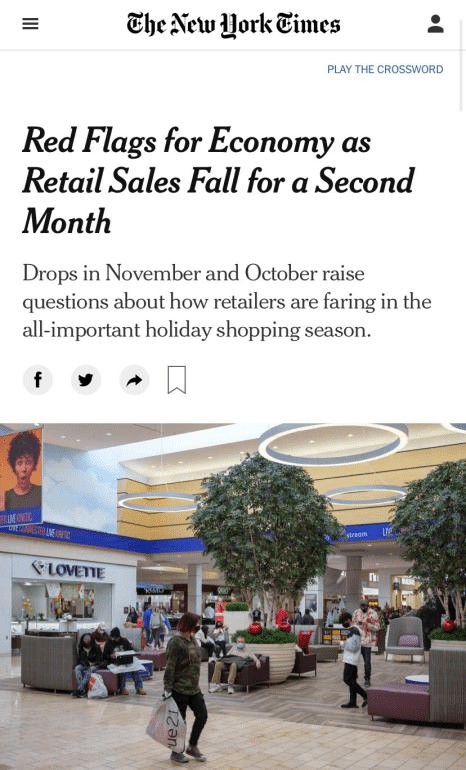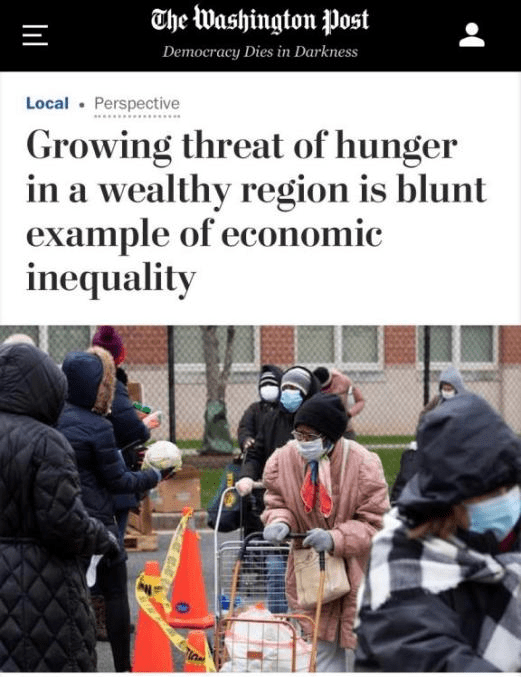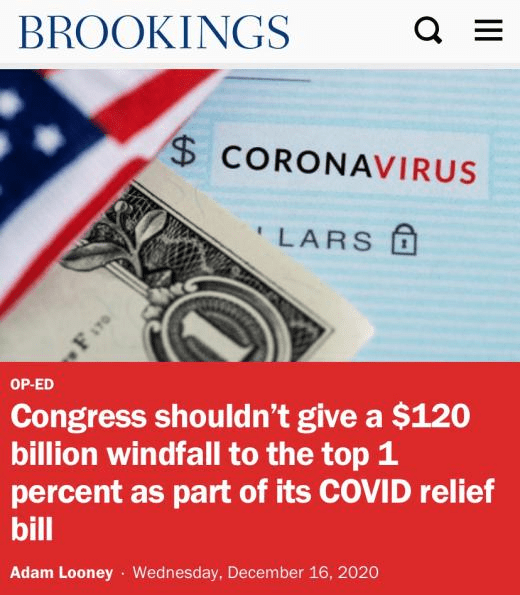December 16th local time, the U.S. Department of Commerce released data that retail sales in the United States fell by 1.1% in November, which was higher than expected.
According to the analysis, the surge in confirmed cases of COVID-19 has led to the introduction of business restrictions and the continuous increase in unemployment, which is having a continuous impact on consumer spending, which is the main engine of the U.S. economy.
The widening gap between rich and poor caused by the epidemic means that a large number of working-class people’s financial situation has deteriorated and purchasing power has declined, which may lead to As a result, the U.S. economy has fallen into a long-term stagnation, and social contradictions have further intensified.

The working class is facing an existential crisis.
According to the data released by the U.S. Department of Commerce on December 16, the retail sales volume of the United States fell by 1.1% in November and 0.1% in October, which was revised to decline by 0.1%, both of which was higher than expected.
According to the analysis, the recent reduction in spending by American consumers is mainly due to the introduction of new business restrictions due to the epidemic.
Among them, several key areas were generally weak, with car sales falling 1.7% in November, electronics sales falling 3.5%, and clothing sales falling 6.8%.
Restaurants and bars were hit hard by new pandemic restrictions in many places, and sales fell by 4% in November.
According to the analysis of The Wall Street Journal, during the holiday shopping season, including Black Friday, U.S. consumer spending was lower than that of the same period last year, because the decline in physical store passenger flow during the epidemic offset the increase in online shopping.
Many analysts also pointed out that the deep cause behind the decline in the consumption capacity of the American people is related to the widening gap between rich and poor. After all, the rich are always in the minority, and the main purchasing power comes from the middle class.
According to the latest report released by the American Tax Fairness Association and the American Policy Institute, the wealth level of the rich in the United States has risen sharply during the epidemic.
The combined wealth of the existing 651 billionaires rose from $2.95 trillion on March 18 to 4.01 trillion dollars on December 7, an increase of more than $1 trillion, or more than 36%. The report shows that the total wealth of 50% of the population at the bottom of the U.S. wealth pyramid is only $2.1 trillion, about half of the total wealth of the billionaires.
Behind the cold figures is the reality that more and more Americans are facing a severe existential crisis.
Between September and December this year, the proportion of households with food shortage rose from less than 10.5% to 12.7%, and the proportion of households unable to pay rent and repay their mortgages on time rose from 7% to 9.1%.
According to the data of the Food Bank of the District of Columbia, the Greater Washington area, as one of the richest regions in the world, has reached 600,000 hungry during the epidemic, an increase of more than 200,000.
The sharp increase in the number of hungry people in rich areas is direct evidence of the sinking of the working class caused by the widening gap between rich and poor. Once these people have no money to spend, the overall retail sales will inevitably be affected.

Policies favor the rich
Although a large number of studies have pointed out the current situation and consequences of the widening gap between rich and poor in the United States caused by the epidemic, the U.S. government has not yet been able to respond effectively, and the introduction of some policies has exacerbated this phenomenon. For example, the U.S. Congress is playing a game over a new round of rescue bill totaling about $900 billion. Some analysts said that the distribution method of relief funds in the new plan is beneficial to the rich and disadvantageous to the poor.
According to the U.S. Consumer News and Business Channel (CNBC), according to some provisions of the rescue bill currently exposed, the number of benefits available to the poor is significantly lower than that of the first round of the rescue bill, and the one-time relief funds most needed by the unemployed will also be significantly reduced. For the poor facing an existential crisis, The plan will be directly affected.
On the other hand, business owners in the upper middle of society may make more profits. At present, the U.S. Congress is considering further partial tax relief for business owners. The Brookings Institution calculated that the move would further reduce taxes of about $120 billion for the richest people at the top 1% of American society, which is equivalent to a “gift” given by Congress to the rich during the epidemic. The Brookings Institution believes that a new round of relief bills will further widen the gap between rich and poor.

Some Americans are trapped in “survival mode”
According to the analysis, according to some provisions of the new bailout bill, the U.S. government is busy coping with short-term pressure and lacks sufficient motivation to solve the gap between rich and poor.
But if the gap between rich and poor continues to widen, 2021 will face greater danger.
Fidelity, a financial services company, recently released a survey to explore how Americans will deal with financial problems in 2021.
Of the 3,011 respondents, more than 38 percent said they would spend the year in the “survival mode”.
This means that they will focus on solving the basic expenses needed in daily life.
Economists are also not optimistic about their forecast for 2021. Although the emergence of the coronavirus vaccine has given people a bright future, the production and vaccination of vaccines still take time.
Before the epidemic is truly controlled, the U.S. economy will not be improved, and it is even more impossible to solve the gap between rich and poor.
If the U.S. economy is to release vitality, the gap between rich and poor must be solved, otherwise the pull ability of ordinary people to the economy will be suppressed.
Xia Chun, chief economist of Noah Holdings Group, said in an interview with CCTV that if fiscal policy is not adopted to adjust the industrial structure and household wealth, the United States will fall into secular stagnation and social contradictions will further intensify.


